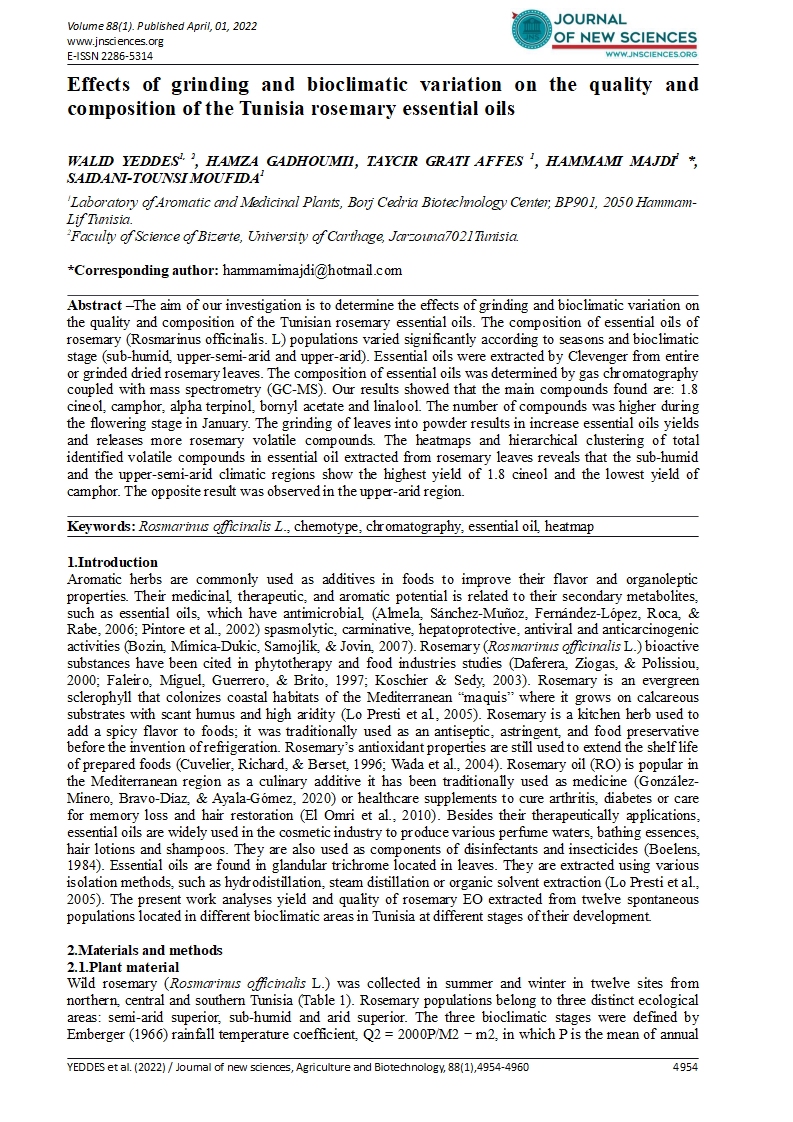

- Category: Volume 88
- Hits: 2250
Effects of grinding and bioclimatic variation on the quality and composition of the Tunisia rosemary essential oils
WALID YEDDES1, 2
HAMZA GADHOUMI1
TAYCIR GRATI AFFES 1
HAMMAMI MAJDI1
SAIDANI-TOUNSI MOUFIDA1
1Laboratory of Aromatic and Medicinal Plants, Borj Cedria Biotechnology Center, BP901, 2050 Hammam-Lif Tunisia.
2Faculty of Science of Bizerte, University of Carthage, Jarzouna7021Tunisia.
DOI: https://doi.org/10.55416/sunb.jns01.2204.08801
Abstract – The aim of our investigation is to determine the effects of grinding and bioclimatic variation on the quality and composition of the Tunisian rosemary essential oils. The composition of essential oils of rosemary (Rosmarinus officinalis. L) populations varied significantly according to seasons and bioclimatic stage (sub-humid, upper-semi-arid and upper-arid). Essential oils were extracted by Clevenger from entire or grinded dried rosemary leaves. The composition of essential oils was determined by gas chromatography coupled with mass spectrometry (GC-MS). Our results showed that the main compounds found are: 1.8 cineol, camphor, alpha terpinol, bornyl acetate and linalool. The number of compounds was higher during the flowering stage in January. The grinding of leaves into powder results in increase essential oils yields and releases more rosemary volatile compounds. The heatmaps and hierarchical clustering of total identified volatile compounds in essential oil extracted from rosemary leaves reveals that the sub-humid and the upper-semi-arid climatic regions show the highest yield of 1.8 cineol and the lowest yield of camphor. The opposite result was observed in the upper-arid region.
Keywords: Rosmarinus officinalis L., chemotype, chromatography, essential oil, heatmap

